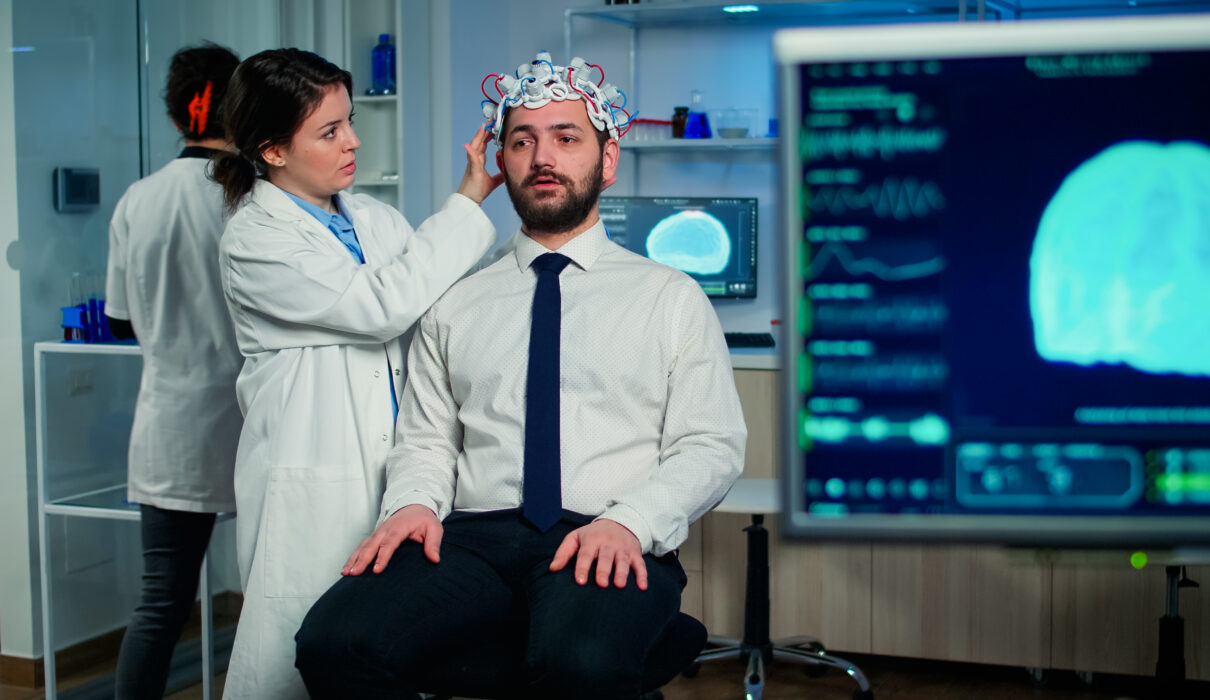The telepathy experiments being carried out in Silicon Valley are fascinating, to the point of playing with ideas or situations that have only been described in science fiction. What is all this revolution about? Let’s find out.
Telepathy experiments in Silicon Valley have nothing to do with parapsychology or the occult. In this case, we are talking about brain-machine interfaces that allow people to communicate directly through thought. Experts say we are only one step away from achieving this.
Although there are currently several telepathy tests being carried out in the Californian region, the most well-known and advanced is definitely the one led by Mary Lou Jepsen, creator of a startup called Openwater and former executive of Facebook and Google . This genius has been working on the subject since 2016 and her progress is remarkable.
Jepsen is highly regarded in the technology world, among other reasons because she holds more than 1,000 patents. She was the creator of the most popular laptop among children in developing countries and did so through the One Laptop for Children foundation . It is said that her hobby is betting on “impossibles.” Today she is the most prestigious researcher of all those who carry out telepathy experiments in Silicon Valley.
“You’ll be able to capture a thought, what’s in your head, and you’ll be able to share it with the world. There’s some pretty crazy brain research going on that suggests we might be able to do this . “
-Mark Zuckerberg-
A relevant antecedent
One of the decisive antecedents of telepathy studies in Silicon Valley was the one carried out by a startup from Barcelona in 2014. The prestigious scientific journal Plos One published the description of this experiment .
Through the investigation, led by Carles Grau, Alejandro Riera and Giulio Ruffini, in collaboration with staff from Axilum Robotics , they connected a device to a transmitter located in Strasbourg. The receiver also had a similar device and was in the Indian town of Thiruvananthapuram. They were 7,700 kilometres apart.
The research group succeeded in getting the sender to send a message to the receiver without saying a word . The word used was “Hello.” In this way, the brains were connected, which constitutes telepathic communication in the strictest sense. This is one of the reference antecedents for Silicon Valley.
Telepathy experiments in Silicon Valley
The basic idea behind Openwater is simple, but also very bold. It consists of reducing the size of an MRI machine to the point that it can be put into a hat . The idea is that the infrared rays of this type of device allow us to study the functioning of neurons and the electrical currents with which they communicate.
Jepsen argues that such a device would allow us to anticipate the words someone will say, before they say them . It would also allow us to see the mental images of that person, through a computer.
In principle, this would make it possible to read someone’s thoughts, but the telepathy experiments in Silicon Valley go further: they are looking to make it possible to transmit mental messages, which is still in process.
There are more explorations of telepathy in Silicon Valley . One of them is Elon Musk’s initiative, called Neuralink , which works through implants called BCI – Brain Computer Interface . Facebook also revealed that it is working on a method for people to be able to write with their minds.
What will happen?
Mary Lou Jepsen’s hat is almost ready, although a definitive solution for telepathic transmission of messages has not yet been announced. At the moment, it is possible to read a person’s mind without them saying a word. The mechanism is being perfected so that another mind can read those thoughts and not a computer.
Another group of researchers studying telepathy belongs to Stanford University’s computational neuroscience lab, led by Dr. Krishna Shenoy. The center has developed technologies that allow people to control physical objects with their minds, including robotic arms and prosthetics (Stanford University, 2020) .
Experts believe that opening the door to reading the mind of one person means that sooner or later this will allow reading the minds of millions of individuals . There is even talk of clouds capable of storing all this data. Advocates of these technologies point out that it would be of great help in detecting “superior minds”, giving them opportunities and accelerating the development of society.
Opponents of telepathy experiments in Silicon Valley are not so optimistic. They think that this would destroy people’s privacy and become a control mechanism , with which even their thoughts would be monitored. Perhaps they are right if one takes into account that the Pentagon also has similar studies and classifies them as “military technology.”


